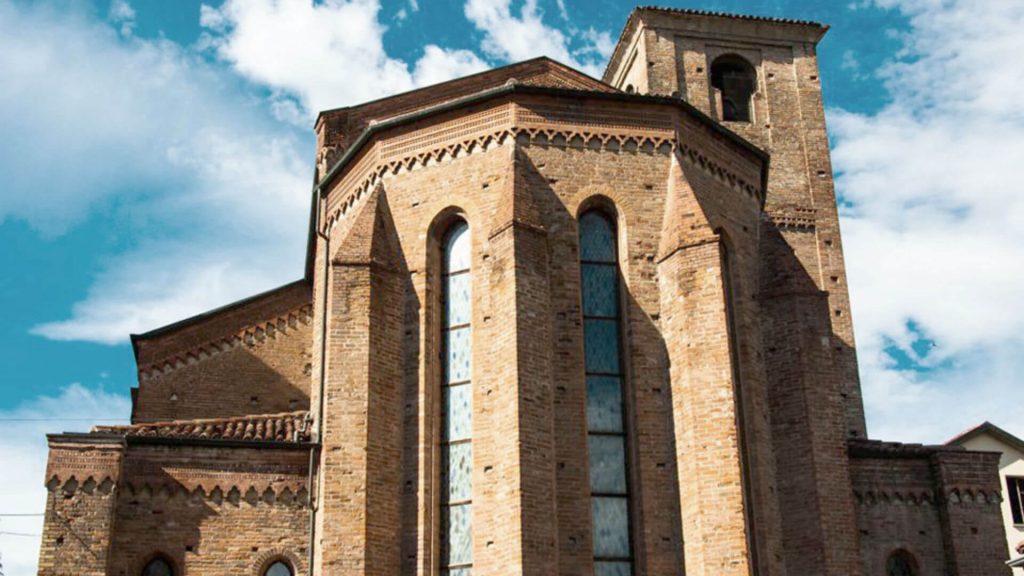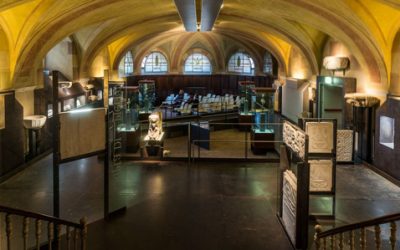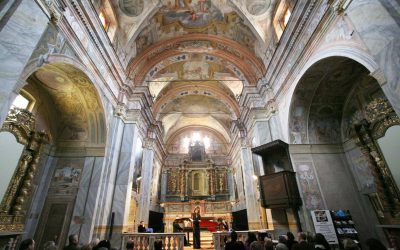Church of San Domenico, Alba, Italy
The story of the Church of San Domenico, Alba, Italy
The Church of San Domenico was built with the convent of San Domenico founded in the last years of the thirteenth century on land donated by Pietro De Brayda, a member of one of the main Albanian families of the time. Of the ancient building that occupied a large part of the block only the church survives today, whose appearance is the result of numerous interventions stratified over the centuries. Originally, in fact, the space of the naves was divided into two parts, probably separated by a pier: the so-called internal church, reserved for the friars and the external church, destined to welcome the faithful during the preaching. While the first was turned and decorated, the second was covered by simple exposed trusses.
In 1440 Pope Eugene IV allowed the priors to collect new funds through the granting of indulgences: it was from then on that, over the course of several decades, the semi-columns and the corresponding external buttresses were superimposed on the walls, intended to support the new vaults .
Following the Council of Trent (1545-1563) and the reform of the liturgy the building underwent considerable changes, with the merging of the two churches into a single uniform space: the altar was moved forward, while the choir, previously located in the central nave, was placed in the apse. Meanwhile, the San Domenico increased its role as a religious city center, certified between the seventeenth and eighteenth centuries by the construction of numerous noble tombs and new side chapels, built in the thickness of the walls as the building was tight between the street public and the cloister (now destroyed).
In the nineteenth century the slow decline of the convent began. First with the suppression desired by the French government (1801) which destined the premises for public use. Then with the passage to the Municipality that, shortly after the middle of the century, proceeded to its almost complete demolition to make room for the Royal College, today the seat of the Liceo Govone. Fortunately, the church was saved: it became the property of the parish of the Cathedral, was assigned to the Brotherhood of the Sacred Heart and reopened for worship in 1826. The last portion of the convent, which included the ancient chapter hall, was incredibly demolished in 1960. The church , the subject of a first conservative intervention in the 1930s, since 1975 it has been managed by the Famija Albèisa who promoted its complete restoration and still maintains it.
Other Church in Alba, Piedmont, Italy
Alba is home to a wide range of churches including, but not limited to, the Alba Cathedral (Cattedrale di San Lorenzo), Church of San Domenico, Church of Mary Magdalene (Chiesa della Maddalena), Church of Saint John the Baptist (Chiesa di San Giovanni Battista), Church of Saint Mary Magdalene and Saint Roch (Chiesa di Santa Maria Maddalena e San Rocco), and the Church of Saint Joseph (Chiesa di San Giuseppe).
- Cattedrale di San Lorenzo (Alba Cathedral): A Roman Catholic cathedral located in the heart of Alba. It was built in the 15th century and boasts a beautifully decorated interior.
- Church of San Domenico: This 13th-century church is characterized by its striking Gothic architecture. The Church of San Domenico has undergone many transformations throughout its history and is now an important cultural landmark.
- Chiesa della Maddalena (Church of Mary Magdalene): This is a Baroque-style church with a richly decorated interior. It’s renowned for the painting of “Madonna del Rosario” by Pietro Paolo Operti.
- Chiesa di San Giovanni Battista (Church of Saint John the Baptist): This church, built in the 14th century, is known for its Gothic style. Notable features include a 15th-century fresco depicting the Madonna and Child, and an impressive bell tower.
- Chiesa di Santa Maria Maddalena e San Rocco (Church of Saint Mary Magdalene and Saint Roch): A small, charming church dating back to the 18th century, known for its Baroque architecture and tranquil atmosphere.
- Diocesan Museum, Alba: This museum is a treasure trove of sacred art and artefacts belonging to the Diocese of Alba. It houses a collection of religious paintings, sculpture, and other artefacts, many of which are from the churches of the region.
- Museum of Archaeology and Natural Sciences, Alba: For those interested in the natural and early human history of the region, the Museum of Archaeology and Natural Sciences in Alba offers a comprehensive collection. It features exhibits ranging from archaeological artefacts, fossils, minerals, to the documentation of local flora and fauna.
- Chiesa di San Giuseppe (Church of Saint Joseph): This church boasts a unique combination of Baroque and Neo-Classical architecture. It is well-known for its two large paintings by the artist Andrea Pozzo.
Remember to check the opening times of each church, as they may vary. Enjoy your walking tour of Alba!
The Evolution of the Church of San Domenico: From the 13th Century to the Present Day
The Church of San Domenico, located in Alba, Italy, is a dynamic testament to the history and culture of the times in which it was built. Its evolution from a 13th-century convent church to a modern-day place of worship is a narrative filled with architectural changes, cultural shifts, and the ongoing influence of religious doctrines.
“The Church of San Domenico: Centuries of Spiritual and Cultural Significance”
The Church of San Domenico has stood as a beacon of spiritual guidance and cultural importance for centuries. Its rich history, from its humble beginnings in the late 13th century, to its architectural enhancements over the centuries, and its resilience amidst societal changes, contribute to its long-standing significance.
Alba’s Architectural Gem: A Comprehensive History of the Church of San Domenico
Alba’s Church of San Domenico is undoubtedly one of the city’s architectural gems. This comprehensive history will delve into the construction, evolution, and significance of this revered edifice, touching on the key architectural features, the importance of its location, and its impact on Alba’s landscape.
Time and Faith: A Detailed Examination of the Church of San Domenico’s History
This title suggests a deep dive into the interplay of time and faith in shaping the Church of San Domenico. The narrative will explore the specific historical events that led to changes in the church, the shifts in religious practices over the centuries, and how the faith of its patrons has stood the test of time.
Beyond Sacred Walls: The Societal Role and Transformation of the Church of San Domenico
In addition to being a sacred space, the Church of San Domenico has played an important role in the society of Alba. The narrative under this title will investigate the societal roles the church has undertaken over the centuries, including its influence on culture, education, and social norms. The transformation of the church in response to societal changes will also be highlighted.
Church of San Domenico, Alba Map, Italy
Via Teaobaldo Calissano
Tel.+39 0173 441742 – +39 328 8390002
Church of San Domenico, Opening hours
Monday to Friday: 10.00 am to 12.00 pm and 3.00 pm – 6.00 pm
Saturday and Sunday: 10.00 am to 12.00 pm and 2.30 pm to 6.30 pm
One day in Alba [mini-documentary]






